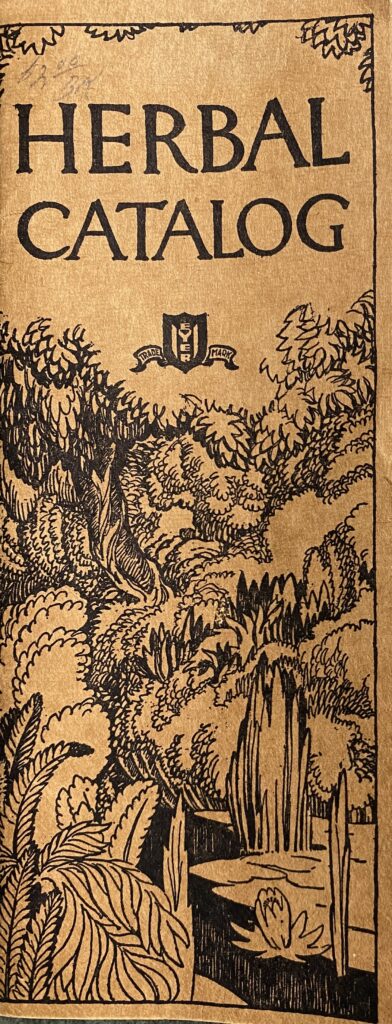
Short Answer:
German Cheese Plant likely refers to one of the herbs in the Malva genus, possibly M. rotundifolia.
Long Answer:
If by chance a friend sends you an old herbal catalog, perhaps one from 1951, and while you are browsing through it, you see references to German Cheese Plant and cheeseplant, and wonder what that is, you’ve come to the right place online to find out.
What is a German Cheese Plant?
Show of hands if you already know what this plant is, then lower your hands and sit back because no one likes a know-it-all.
It took me a bit of time to figure it out.
Online searches showed me all kinds of German cheeses, the kind made from milk, and where they are made.
I also saw many pictures of the Swiss Cheese houseplant, which as we all know is Monstera.
But I found nothing that told me what the plant, “German Cheese Plant,” is.
Time for a deeper dive!
I headed over to Google Books and entered my search term there to see if perhaps an old book with information about German Cheese Plant might have been digitized.
Eureka! I came up with something!
Behold, a publication called ‘The Pharmaceutical Era’ from 1924 contains a probable answer.

Even in 1924, they were kind of guessing as to what German Cheese Plant was. And I quote:
We are unable to find the name “German cheese plant” in any of the numerous reference lists of plants that we have consulted, though we are strongly of the opinion that it is synonymous with “Dutch cheese,” which is a very common name in many localities for Malva rotundifolia, otherwise known as the low, dwarf, or running mallow, a plant which is widely distributed as a weed throughout most of the United States. The popular name “cheeses” given to this plant, is derived from the form of the fruit. The common German name is “Kaesekraut.”
The Pharmaceutical Era, 1924
Does my search end there? Of course not. I searched for “kaesekraut” which got me nowhere since most of the results were in German, which I don’t know, though I have many ancestors from Germany.
My next step was to consult someone who knew more about herbs than I do. So I sent an email to Susan Betz, an author and herbalist up in Michigan and quickly got two images from some old books on her shelves. One of the books was Nature’s Garden by Neltje Blanchan, written in 1900.
As soon as I saw the title, I realized I had seen that book, possibly owned it, but when I searched in my records of the books I’ve cataloged, I came up empty. Then I searched on my blog to see if I’d written about that book and up popped a post from 2013. Oh, I own that book! Or did at one time. Why isn’t it my database of books? Is it one I set aside to donate? Surely not! I searched through those books and couldn’t find it, so I went back to the spare bedroom where I kept a lot of the old books before cataloging them and realized that there were still a lot of books in there to make decisions about but more importantly…
I found two copies of Nature’s Garden. With and without a dust jacket.
To bring this all to a close because at least we know that cheese plants refer to plants in the genus Malva because of the shape of the little seedhead, there is an odd coincidence involved because the person who gave one of the copies of Nature’s Garden also gave me the herbal catalog. Thanks, Jo Ellen Meyers Sharp, The Hoosier Gardener, for remembering that I like old gardening books, and catalogs.
If you’ve read this far, I’ll leave you with two more tidbits.
The Herbal Catalog is from a company called Indiana Botanic Gardens.

The German Cheese Plant was used in herbal compound no. 99.

At this point, I should include a picture of a Malva plant’s seedhead, or fruit, so you can see why it looks like cheese. But I did not. Maybe someday I’ll run across a Malva with seedheads, remember this post and add it here.
Now go forth with your new found knowledge of what a German cheese plant is and impress your family and friends with how smart you are!


A weed by any other name????
I just wanted to tell you that I am so impressed with your daily posts. Was this a New Year’s resolution? What with your podcast, books, and rabbit holes, you must be leaving the gardening duties to the Garden Fairies.
Peace,
I actually started posting more frequently earlier this summer so not a New Year’s resolution. The garden fairies haven’t yet complained about having to do more, and the garden isn’t a mess because I wrote early in the morning or later at night!
And yes, it is weed by another name!
Common mallow, Malva neglecta, is also called cheeses for the same reason. (Actually, I can’t really tell the difference between M. neglecta and M. rotundifolia.) I think every flower in the mallow family has that same seed pod: flat and round like a wheel of cheese, each seed a little section or wedge from the wheel. Often German things were called Dutch (as in Pennsylvania Dutch) because the German word for German is Deutsch which lazy English speakers mangle (or mishear) as Dutch.
Good info, Thanks!